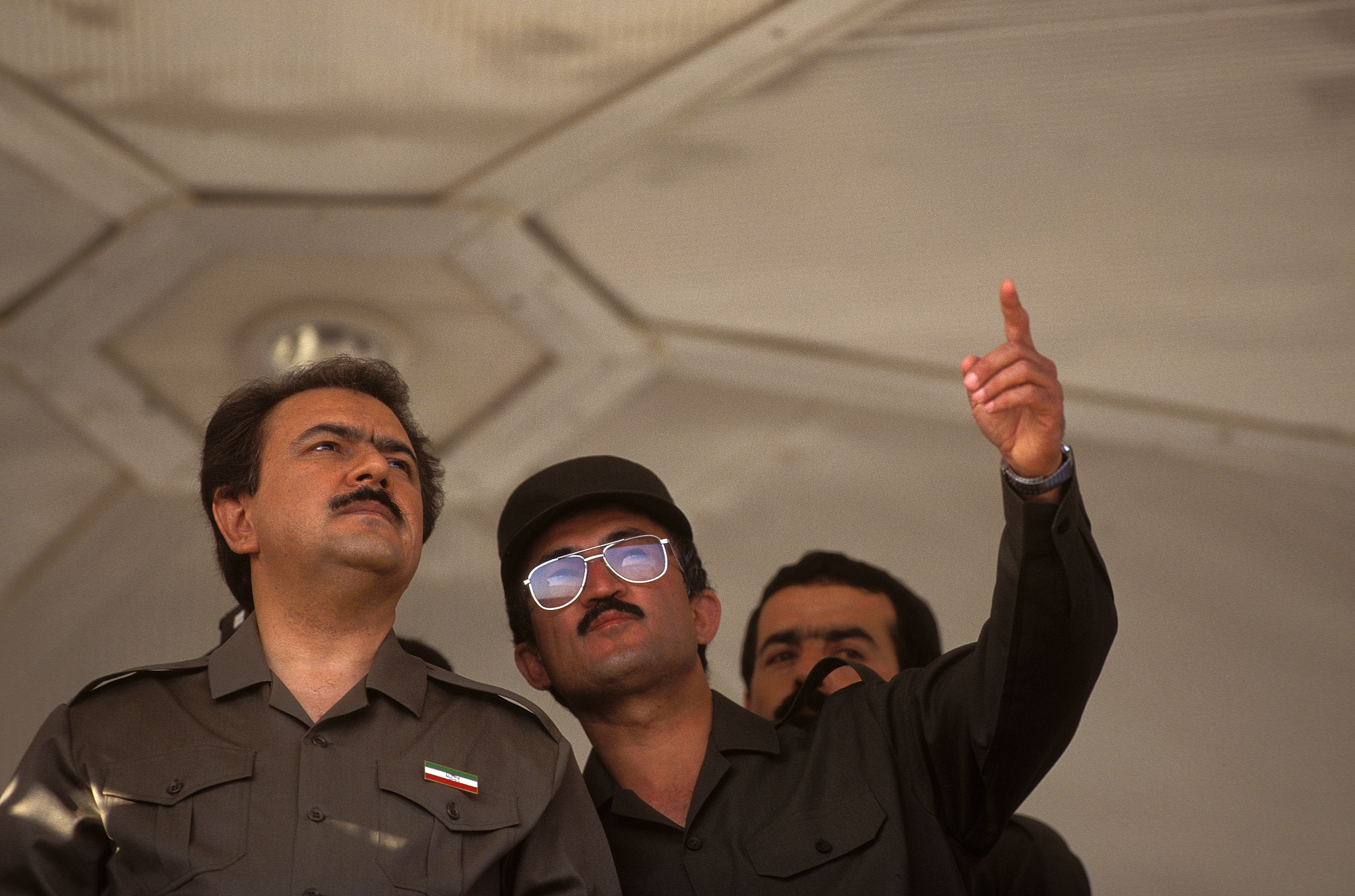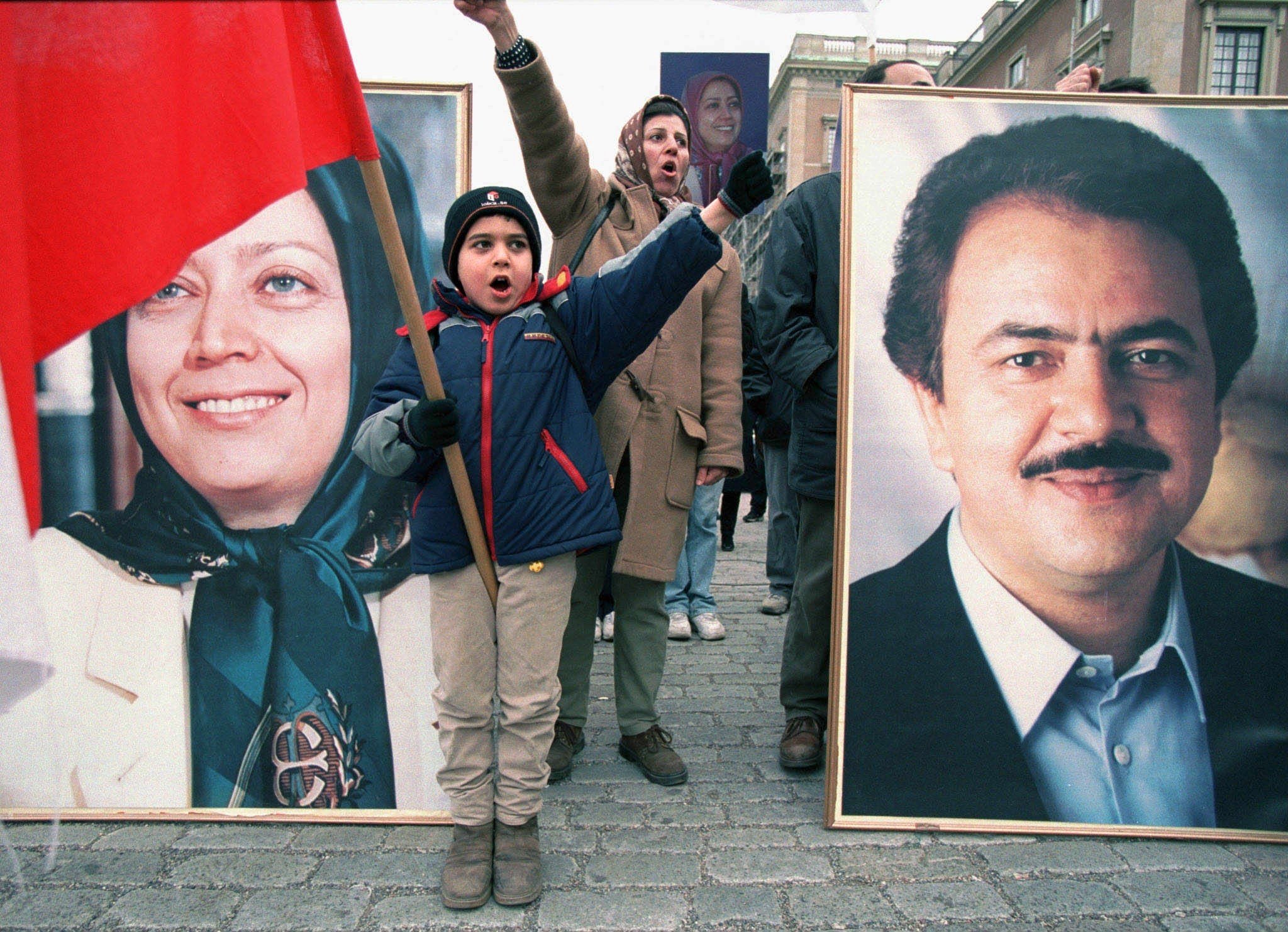
Tehran, Iran – Massoud Rajavi, the long-thought-dead former leader of a group that Iran considers a “terrorist” organisation, actually died three years ago of health issues under United States supervision, according to Iranian media reports.
The former leader of the Mojahedin-e Khalq (MEK), born in 1948, died of a heart attack after years of illness, according to a report by the state-linked Tasnim news website, which quoted an unnamed security official on Sunday.
Neither the MEK – which calls for the overthrow of the Iranian establishment – nor Washington has ever officially confirmed the death of Rajavi. His wife, Maryam Rajavi, has been the public face of the organisation for two decades.
Rajavi has not been seen publicly since the United States invaded Iraq in 2003. Speculation over the years had consisted of theories saying he was killed long ago, or imprisoned outside Iran.
Revolutionary years
Rajavi was one of the people who worked towards a movement that eventually led to the Islamic revolution in Iran in 1979.
Having graduated with a degree in politics, he joined the MEK, which at the time was a left-wing group opposed to Mohammad Reza Shah Pahlavi.
He spent years in prison during the reign of the Shah after emerging as the leader of the group. His release came along with other political prisoners after the success of the revolution.
But it was not long until he fell out with the leader of the fledging republic, Ayatollah Ruhollah Khomeini, among other things over the extent of the supreme leader’s power.
Rajavi, who had unsuccessfully tried his hand at presidential and parliamentary elections as well, fled Iran for Paris in 1981 along with Abolhassan Banisadr, Iran’s first-ever president, who had been impeached after falling out with the leaders of the new republic.
The two joined forces and founded the National Council of Resistance of Iran as the umbrella organisation of the MEK, which they billed as an alternative to the Iranian establishment. But they also did not see eye-to-eye as Rajavi wanted to take a more violent approach towards Tehran.
Bombings and war commander
To challenge Khomeini’s new order, the MEK had already launched a series of attacks, including bombings, that killed many civilians in Iran.
They organised many assassinations, the most high-profile of which killed Iran’s second president, Mohammad Ali Rajai, and then-Prime Minister Mohammad Javad Bahonar. They even tried to kill the current supreme leader, Ayatollah Ali Khamenei.
Saddam Hussein’s eight-year invasion of Iran in the 1980s, which was backed by a host of foreign governments, presented Rajavi with an opportunity to take things to a new level. He relocated to Iraq and formed what he styled as a “liberating army”.
A United Nations Security Council resolution was adopted in July 1987 to end the war. But Iraq kept attacking until it was forced to accept the end of the war a year later.
Rajavi tested himself as the commander of a military force in a large-scale operation before the end of the war. Backed by Hussein, he led a considerable force, including thousands of tanks and armoured vehicles, and made an incursion into Iran.
“Today Mehran [located on the western border with Iraq], tomorrow Tehran” was famously their slogan, as they had set an ambitious goal to conquer the capital in about a day and a half.
The force made significant advances but was decimated in a major ambush operation by Iranian armed forces, which left Rajavi and his remaining forces no choice but to retreat after several thousand were killed and hundreds were captured.
One of MEK’s later assassinations, the gunning down of Ali Sayyad Shirazi in 1999, is believed to have been an act of revenge, since Shirazi, the commander of the Iranian ground forces during the war, had personally led the operation that took out Rajavi’s men.

What does Iran say happened to him?
The Tasnim report on Sunday claims to shed new light on what happened to Rajavi in Iraq.
It says the Iranian intelligence sources believe Rajavi sustained serious injuries to his feet and face as a result of a US operation during its occupation of Iraq. That is partly why he was reluctant to appear publicly.
Without giving dates, Tasnim says Rajavi fled to Jordan, where he had no access to proper treatment for his diabetes and irregular blood pressure due to fears he might be discovered. He reportedly ended up losing his vision and had one foot amputated.
Over a decade ago, the MEK was trying to get the US and the European Union to drop it from their list of “terrorist” organisations, which eventually proved successful in 2012, complete with a relocation to Europe.
That is when, according to the Iranian outlet, the US insisted on Rajavi not having any further public appearance, for him to be kept under US guard and supervision, and for his wife to assume leadership. After the invasion of Iraq, only audio tapes attributed to Rajavi have been published from time to time.
Rajavi was “under control and protection of US forces at an unknown location, with some documents pointing to the US as his hiding place”, it said.

What’s the MEK doing now?
The MEK has been active since Rajavi’s disappearance and continues to operate out of Europe under his wife, who wants to be Iran’s next president.
Its operations, especially online, increase exponentially whenever there is unrest in Iran, like when months-long protests swept the country last year after the death of Mahsa Amini in police custody.
However, the group lacks credibility within the country, even though current and former high-ranking US officials have been known to regularly attend its rallies as keynote speakers. The Donald Trump administration officials were especially interested after leaving the 2015 Iran nuclear deal and imposing sanctions on Tehran in 2018.
Iran has responded by blacklisting US officials and decrying their European counterparts in various countries for supposedly sheltering and supporting group members.
The Iranian government continues to designate it as a “terrorist” group as it maintains that the MEK has killed more than 17,000 Iranians over the decades.
The MEK’s main camp west of Tirana and its several thousand residents were raided by Albanian police in June, which said it detected unsanctioned political activities.






